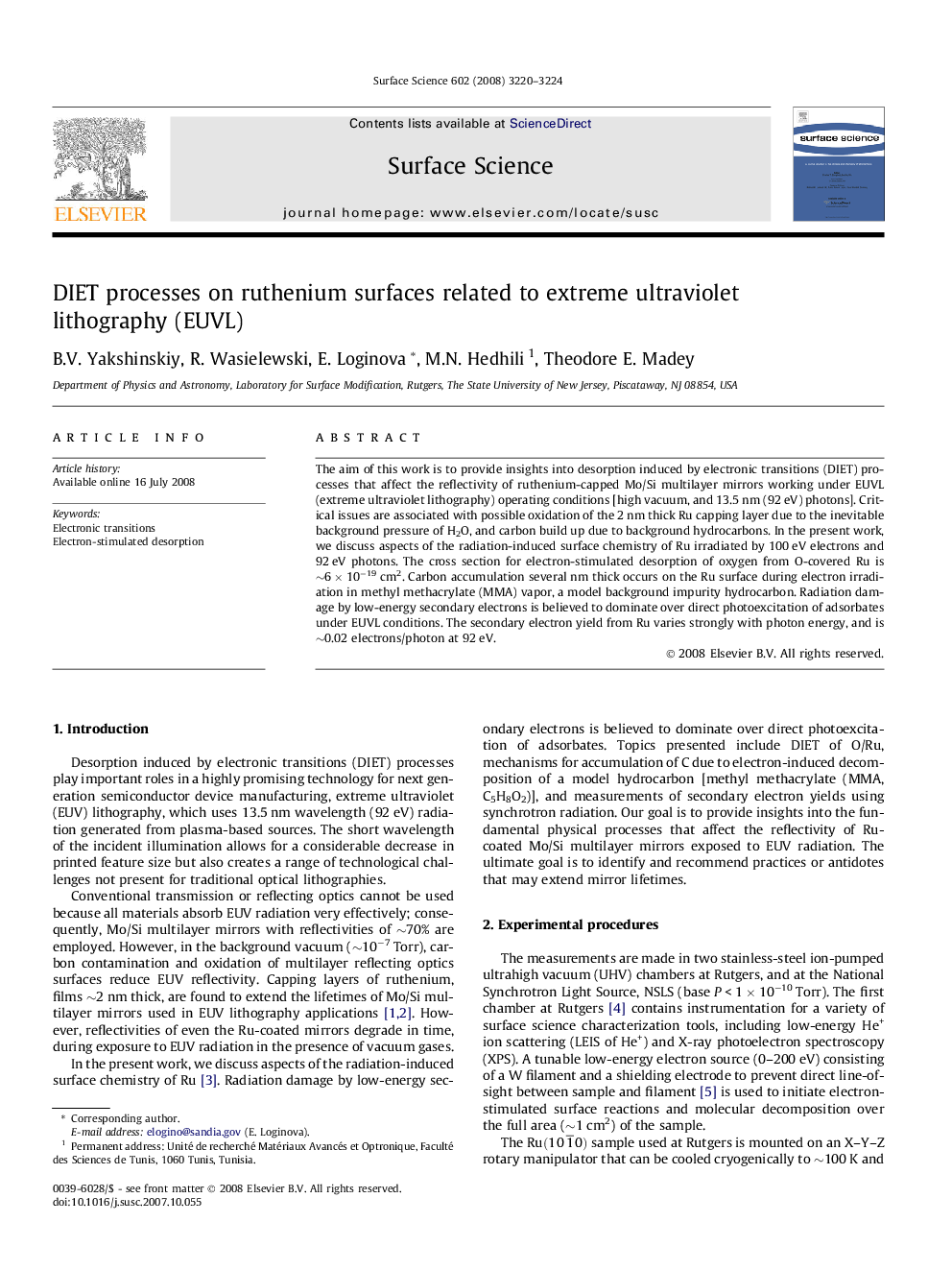| Article ID | Journal | Published Year | Pages | File Type |
|---|---|---|---|---|
| 5424427 | Surface Science | 2008 | 5 Pages |
Abstract
The aim of this work is to provide insights into desorption induced by electronic transitions (DIET) processes that affect the reflectivity of ruthenium-capped Mo/Si multilayer mirrors working under EUVL (extreme ultraviolet lithography) operating conditions [high vacuum, and 13.5Â nm (92Â eV) photons]. Critical issues are associated with possible oxidation of the 2Â nm thick Ru capping layer due to the inevitable background pressure of H2O, and carbon build up due to background hydrocarbons. In the present work, we discuss aspects of the radiation-induced surface chemistry of Ru irradiated by 100Â eV electrons and 92Â eV photons. The cross section for electron-stimulated desorption of oxygen from O-covered Ru is â¼6Â ÃÂ 10â19 cm2. Carbon accumulation several nm thick occurs on the Ru surface during electron irradiation in methyl methacrylate (MMA) vapor, a model background impurity hydrocarbon. Radiation damage by low-energy secondary electrons is believed to dominate over direct photoexcitation of adsorbates under EUVL conditions. The secondary electron yield from Ru varies strongly with photon energy, and is â¼0.02 electrons/photon at 92Â eV.
Related Topics
Physical Sciences and Engineering
Chemistry
Physical and Theoretical Chemistry
Authors
B.V. Yakshinskiy, R. Wasielewski, E. Loginova, M.N. Hedhili, T.E. Madeyâ ,
